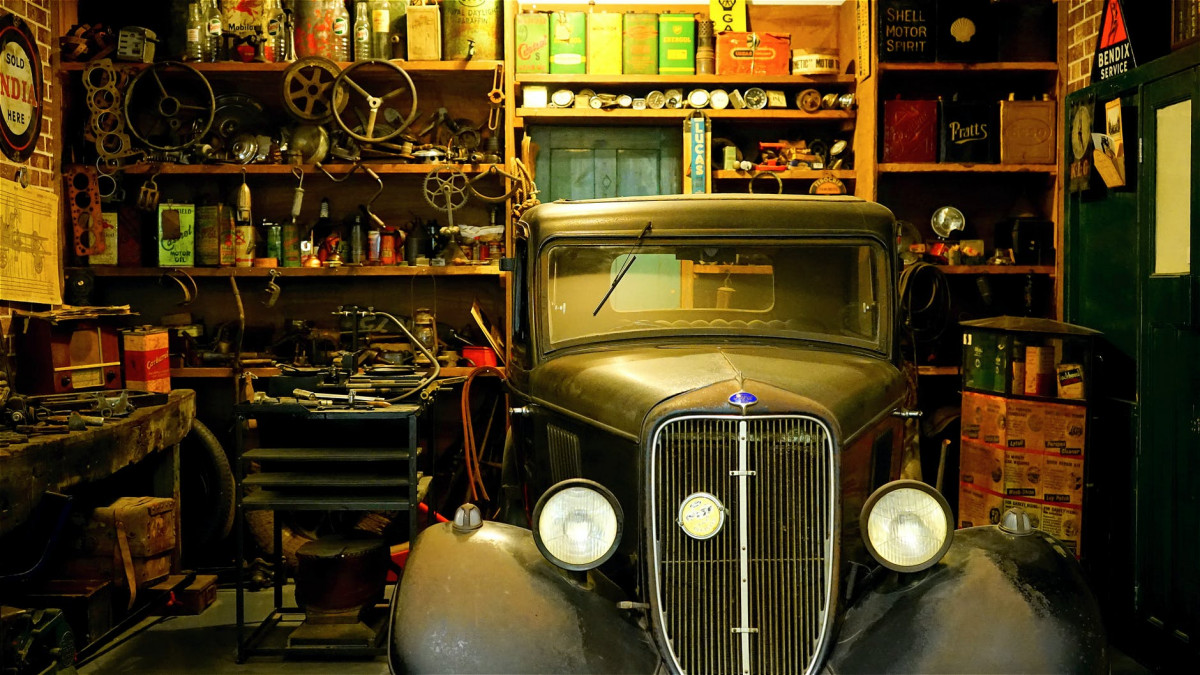Everything You Need To Know Before Getting A Garage Heater 2022: Guide On Selection, Use, Safety And Maintenance
Quick Navigation
What is a Garage Heater and Where it is Used?
A heater is a device that produces heat. A garage heater is a relatively small portable unit powered by electricity or gas that is used for quick and effective heating of large cold rooms. Apart from a garage, heaters of this kind can be used in the following places:
- constructions sites;
- workshops and “man caves”;
- farmhouses;
- at home (some types).
A good garage heater must be powerful enough and safe to use in a closed space. Modern heater are equipped with a range of safety features and meet numerous safety standards.
✅ Best Electric Heater For Garage Backyard Wall Patio
Easy to set up, convenient remote allows you to control it sitting down! – This heater has been great for our back porch patio. It was easy to install. It’s a good size and very durable. It can withstand harsh weather, it has proven that as we have had some storms and still experiencing wintery conditions. It is waterproof, which for having this set up outside is a must.
Things to Consider When Choosing a Garage Heater
Garage heaters are quite expensive. The same is about the resources they consume. If you don’t want to waste your money without getting the desired result, make a carefully weighted decision. Here are the key things to consider when choosing the best garage heater.
Garage Size
Each heater model is intended for the heating of a particular area, which is commonly indicated in the spec list. Apart from the floor space, it is necessary to consider the height of the ceiling, the size of windows, the quality of insulation, ventilation holes, and so on. A too powerful device will consume much fuel and burn much oxygen. A weak heater can be insufficient for a large room, but you can place it under the table and keep your feet and hands warm if you don’t need to heat the whole garage.
The Source of Power
Based on the fuel source, three main types of heaters are normally distinguished: those powered by electricity, natural gas, and propane. Each type has its own advantages and disadvantages. Make sure you’ve chosen the right model before making a purchase.
- Propane Heaters
Garage heaters powered by propane are powerful and relatively inexpensive to run. An average propane garage heater produced five times more heat than an average electric option. They are the most effective tool for a fast and even heating of large and very large spaces. On the plus side, they are portable because they don’t need plugging in, so you can place them wherever you like. On the minus side, propane heaters are expensive, bulky (because of the gas cylinder), and dangerous. Firstly, you deal with an open flame and gas, which is fire-hazardous and highly explosive. Secondly, gas combusting produces toxic exhaust.
- Natural Gas Heaters
In terms of the principle of action and efficiency they are close to the propane heaters with only one difference: instead of a gas cylinder, you connect to a gas line. The distinctive feature of a natural gas garage heater is a low maintenance cost but a high initial cost of the equipment. Gas heaters are also powerful but dangerous.
- Electric Heaters
An electric garage heater is the safest and the cheapest type. It works exactly like any other electric device: via a power cord, it is connected to a power source and produces heat. Electric heaters are easy to use and affordable but in the long-term perspective, their maintenance costs are higher. They are less powerful if compared to the gas-powered options. If you have a small garage, an electric heater will be sufficient to warm it up.
Heater Type
Regardless of the power source, garage heaters can have different constructions. The popular types are fan-forced and radiant (infrared) models. Both types have their own pros and cons.
- Fan-Forced Garage Heaters
As the name suggests, these heaters work like big fans. They take in cold air, push it through rotating heating elements where it warms up, and then pull it out. They heat the air evenly and can cope with larger rooms. On the minus side, the air gets heated relatively slowly. Fan-forced devices are, probably, the most popular ones thanks to their convenience, ease of use, and a possibility of temperature regulating.
- Radiant (Infrared) Heaters
Instead of warming up surrounding air, heaters of this type themselves serve as heat sources. They produce heat waves that radiate from the device like sun rays. An infrared garage heater won’t heat up the entire room; instead, it will create a small isle of warmth. Radiant heaters are ideal for those who want to warm up a small working area without heating the whole garage. They work silently, which is also a strong pro argument.
Power Output Level
The power output can be measured in different units, depending on the power source. Gas-powered heaters produce heat measured in the British Thermal Units or BTU. Garage electric heater models, in turn, generate heat that is traditionally measured in watts. Choosing the best heater for garage, you can rely on the garage heater calculator.
Gas heaters:
- A 4000-9000 BTU heater can heat up to 250 sq. feet.
- A 25 000 BTU heater – up to 600 sq. feet.
- A 30000 BTU garage heater can heat up to 1000 sq. feet.
- A 45000 BTU garage heater heats around 1350 sq. feet.
- A 75000 BTU garage heater is capable of heating more than 1500 sq. feet. For larger rooms, there is a 80000 BTU garage heater option.
Electric heaters: A 2500 Watt heater will do for a 500-ft garage.
- A 5000 Watt heater will cope with the heating of a 600-ft+ room.
- For larger spaces, more powerful and economic gas heaters are commonly purchased.
Safety Features
No matter what type of a garage heater you use, always keep in mind that it is a heating device. It means that it is a potentially dangerous object that can cause burns, injuries, and even a fire. Thankfully, modern heaters have safety features that prevent most hazardous situations.
- High Temperature Wire Guard
Surfaces of radiant heaters tend to get very hot. If you accidentally touch it, you may receive a burn. A wire guard acts as an obstacle that prevents you from touching the hot surface but lets the heat waves out freely.
- Overheating Protection
Overheating is not good for any electric appliance. Firstly, it can cause the breakdown of the device and secondly, it can trigger a fire hazardous situation. The feature of the overheating protection makes the heater turn off automatically when the temperature grows too high.
- A Tip-Over Switch
This useful feature can be found not only in heaters, but in some other electric appliances. It switches off the device if it was turned over or knocked down. This safety feature helps to prevent spontaneous combustion and other hazardous situations.
Settings
Most garage heater models offer flexible settings that allow adjusting the device according to the user’s personal needs. The most common setting found in the majority of heaters is heat regulating. More advanced models have some extra settings and options.
- Adjustable louvres allow to regulate the direction of a heat flow – this option is found in fan-forced garage heaters.
- Regulating of a power cord or a hose length. Portable heaters provide much flexibility but their portability is always limited by the length of a cord (for electric models) or of a hose (for propane options). Some manufacturers offer a feature of a hose/cord length regulating, which is rather convenient.
- A handle is a must-have for portable heaters. The device itself can be too hot and bulky. Meanwhile, a convenient handle helps to resolve this issue.
Top-Five Facts about Heaters
- Improper use of home and garage heaters is one of the most frequent reasons of fires. Before switching on a heater, make sure there are no prone-to-fire objects around.
- The oldest US municipal natural gas system was established in 1836 in Philadelphia.
- Fan-forced heaters are more effective when they are installed on the floor; radiant heaters, on the contrary, must be placed higher on the wall or on the ceiling.
- Infrared radiation is not 100% harmless. A low-quality or improperly mounted heater can cause certain harm if you stay close to it for too long.
- Fan-forced heaters are not recommended to people suffering from asthma, bronchitis, and other respiratory disorders.
Garage Heaters Maintenance
Generally, garage heaters are easy to maintain. Some general recommendations include the following simple tips:
- An electric heater usually requires nothing but usual cleaning/wiping and regular inspection of the wiring system. Don’t forget to disconnect the device before cleaning.
- A gas heater is potentially a more dangerous installation. Check the gas supply equipment (the cylinder, hoses, etc.) for leakage regularly.
- Gas cylinders must be replaced timely; otherwise, you’ll be run out of gas.
How to Heat Your Garage Effectively?
It’s important to choose the right garage heater, but it is not enough. To make the most of using the device, you need to do certain preparatory work and think about precaution measures. Here are universal tips and recommendations for garage heater users.
- Insulation
It is pointless to buy and install a heater if the heat immediately escapes through the holes in the walls, roof, and windows. Insulate your garage properly and make sure that it can keep the heat. Chances are, it will turn out that you can do without a heater at all.
- Choose the Right Heater
To choose the proper heater you need to know all the parameters of your workshop or garage – its size, communication lines (e.g. availability of a gas line, wiring), and the height of the ceiling. Use the heater calculator to choose the needed power output and type of the device. Price is another aspect that matters: for example, propane vs kerosene garage heaters are considered a bit more expensive but safer.
- Legal Issues
Make sure that you don’t break the law by installing a chosen heater. It can turn over that you may use only a 110V electric garage heater, not 240 or it is necessary to get permission before mounting a heating unit. It’s a good idea to consult a fire inspector before installing anything.
- Check Doors and Windows
When making insulation, don’t forget about doors and windows – if there are holes, insulation of walls and ceiling won’t help to preserve heat. Remember that heat escaping is equal to money escaping.
How to Heat Your Garage Safely?
Availability of safety features in your heater doesn’t mean you need no precaution measures. Strict compliance with these measures can save not only your garage but also your life one day.
- Firstly, never leave a hot or working device alone. Try to switch it off in advance before going home.
- Secondly, don’t cover a heater with anything and don’t place any objects and substances that are prone to fire near it.
- Thirdly, turn off and disconnect the device before cleaning.
- Fourthly, buy a fire extinguisher and keep it in the garage.
How many BTU does it take to heat a 2-car garage?
It depends on the garage size, the height of the ceiling, the heater type, and the desired temperature. Commonly, it is considered that a 2-car garage is 1200-1400 square feet. A fan-forced propane heater must have a power output of 45 000 BTU to heat such a garage efficiently and quickly.
How do I calculate a garage heater’s thermal output?
Depending on the heater type, its thermal output can be measured in BTU or Watts. Use a special heater calculator to know what power output you need. As an example, by multiplying the room size by 8, you’ll know the wattage you need for its heating.
How can I heat my garage cheaply?
Firstly, insulate your garage as thoroughly as possible. Secondly, buy the right heater that best suits for its size: electric models are cheaper but more expensive to run; gas models are expensive but low-maintenance.
Can I heat my garage with a propane heater?
Yes, you can. Mind that it is crucial to choose the right model that correlates with the size of your garage and can be installed inside it without scarifying safety.
Can a garage heater be used in other rooms?
Yes, they can. They are often used for heating workshops, construction sites, farmhouses, and other non-residential rooms.
How to install an electric heater and wire it?
The best approach is to hire a professional electrician, but you can try to do it on yourself if only you have the needed skills and qualifications. The detailed guide comes with the heater. Here is a brief instruction:
- Check the wiring system in your garage and make the necessary preparatory work. Mount a junction box and run a sheathed cable to the place where the heater will be located.
- Wire the thermostat carefully and screw it onto the wall. Don’t forget about grounding.
- Wire the heater itself in accordance with the manufacturer’s manual.
===> Find Even More Related Good Ideas ===>
Other Garden Enthusiast Are Reading:
✅ Trending
- 11 Things You Should Know About Backpack Sprayer Before Buying One: The Guide To Safety, Selection And Maintenance 2022
- Best Backpack Sprayer 2022: Complete Buyer’s Guide For Fertilizers, Herbicides & Pesticides
- All You Need To Know Before Your Garden Sprayer Purchase: The Essential And Convenient Plant Maintenance Tool FAQs 2022
✅ Outdoor Garden Design And Tips
- How To Grow Your Own Medicinal Garden? The Easy Tips On Caring And Nurturing Plants and Herbs 2022
- Beginner’s Guide To Mastering Garden Shears 2022: Tips On Safety, Selection, Maintenance And More
- Tips For Drought Season – 7 Essential Practice You Must Do For Survival 2022
✅ Indoor Design And Tips
- How To Plan Garden Storage Sheds? Tips You Have To Know Before Your Purchase 2022
- The Best Grow Box To Cultivate As A Pro Reviewed 2022: Incubate Your Perfect Indoor Greenery Garden
- The Best Bed Bug Killer Spray 2022- Permanently And Quickly Get Rid Of Pest
✅ Even More Great Products
- Best Backpack Sprayer 2022: Complete Buyer’s Guide For Fertilizers, Herbicides & Pesticides
- How Effective Are Ultrasonic Repellers? Tips You Need For Keeping Insects At Bay With Ease 2022
- Beginner’s Guide to Gardening Shoes: 9 FAQs And Why You Need Them 2022
✅ Sustainable Lifestyle Products And Tips








